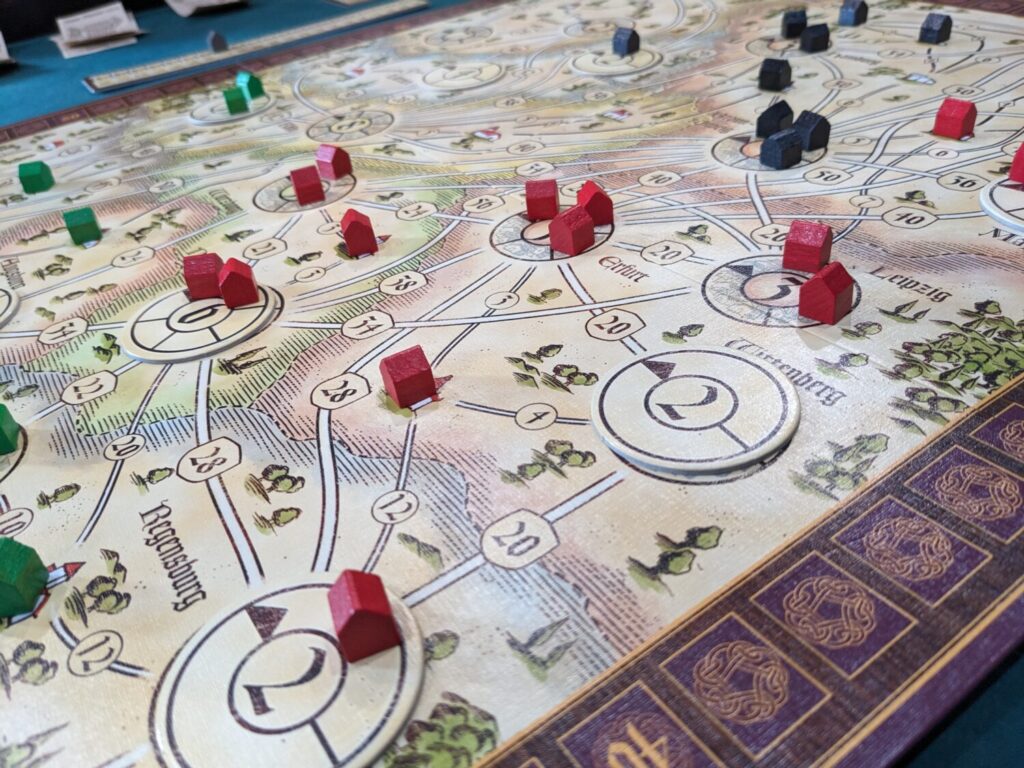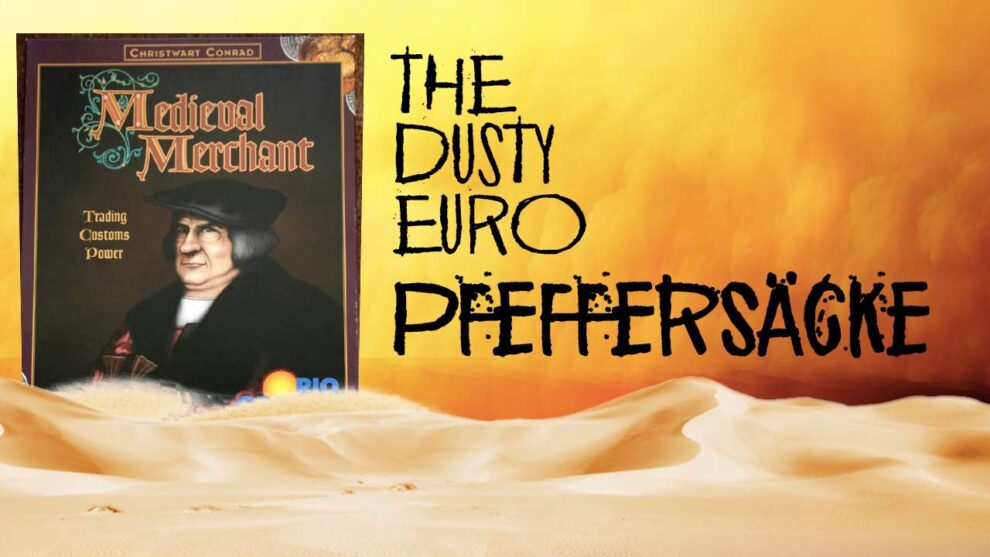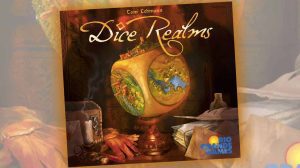The guys in my Wednesday gaming group started a push to play more of the old, dust-covered games at the bottom and backs of our respective game closet shelves. The premise was simple: let’s try to remember why we keep all these old games when all we ever play now are the newest, shiniest things in shrink.
Right on the spot, the Dusty Euro Series was born, and I’ve enlisted multiple game groups to help me lead the charge on covering older games.
In order to share some of these experiences, I’ll be writing a piece from time to time about a game that is at least 10 years old that we haven’t already reviewed here at Meeple Mountain. In that way, these articles are not reviews. These pieces will not include a detailed rules explanation or a broad introduction to each game. All you get is what you need: my brief thoughts on what I think about each game right now, based on one or two fresh plays.

Pfeffersӓcke: What Is It?
Pfeffersӓcke (“Medieval Merchant”, in English) is a 2-6 player economic area majority game. Published by Rio Grande in the US all the way back in 1998 (and later rethemed as Franchise in 2018 by Queen Games), Pfeffersӓcke might feature the driest cover of the games I have profiled in the Dusty Euro series. It now stands for me as the purest definition of olden-time Euro-style gaming: a beige board that puts modern beige boards like Tiletum to shame, paper money that was so bent out of shape that I almost wanted to sleeve the bills, and calligraphy so difficult to read that I’m still not sure where Wurzberg is represented on the map.
As followers of this series know, my love affair with older games is tied to the “simple to learn, difficult to master” approach to the rules. (Think Concordia, but with a double-sided rulesheet instead of something “long” like six full pages of rules.) Pfeffersӓcke fits the bill here, with a simple action selection mechanism and play that wraps in about an hour.
Players are working to establish trading houses across a large map of Germany in “medieval times.” The turn structure feels novel, strange for a game that is nearly 30 years old; players can choose to build out their board presence in city locations OR take income, before getting a small amount of standardized income for free, based on player count. Then players have a choice, if they have enough cash: build a new trading post in a town, which will help them connect to other major cities, or build a post in a city, in the hopes of taking over the area majority for that location.
Play moves quickly, as players can choose their spots to build or take a larger income, and Pfeffersӓcke includes a loan system facilitated by “escort letters” that can boost a player’s ability to reach more distant locations on the map. Unlike some of the more recent area majority games I have played, Pfeffersӓcke uses the same map regardless of player count, leaving some areas to be very competitive while others are essentially empty at lower counts.
Once all small town locations are filled, trading post builds have stopped, or all large cities have scored majorities, the game ends immediately.

It’ll Get to the Table Again
Our group of three players got one rule wrong, but otherwise this was a smooth time at the table. Even a few turns in, I knew that Pfeffersӓcke was a winner. The race to establish presence, and later dominance, in an area is important, and finding the best places to connect to new locations via towns becomes vital late in the game.
The big opportunity for Pfeffersӓcke comes down to player count…at three players, the map is simply too open for my tastes. I like my games tight, and I already know Pfeffersӓcke shines brightest at its full player count. (BGG seems to agree.) Our play still had plenty of tension, but it was tied to a fight over just 3-4 cities and a small batch of towns. With six players, I am sure everything is a fight, which is what you want in a game that scores the way Pfeffersӓcke does.
Look, Pfeffersӓcke is an ugly game…which means it is perfect for the purposes of this discussion. The typeface is hard to read, but once players figure out what city is where, it’s easy to call out which part of the board is being scored at any one time. BGG has a couple of player-generated game aids which helped immensely, since the game’s ruleset is simple and player aids clearly hadn’t been invented when this came to market in the late 90s.
I’m already excited to try this one again. Pfeffersӓcke had the look of a “dusty”, but it is a much deeper game than initially expected. If you can track this one down, give Pfeffersӓcke a look!










